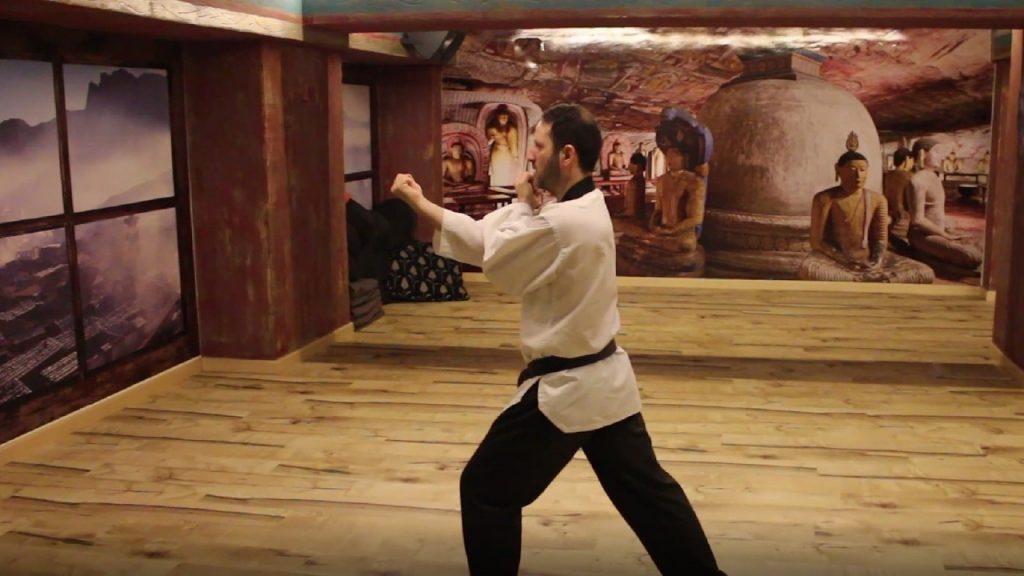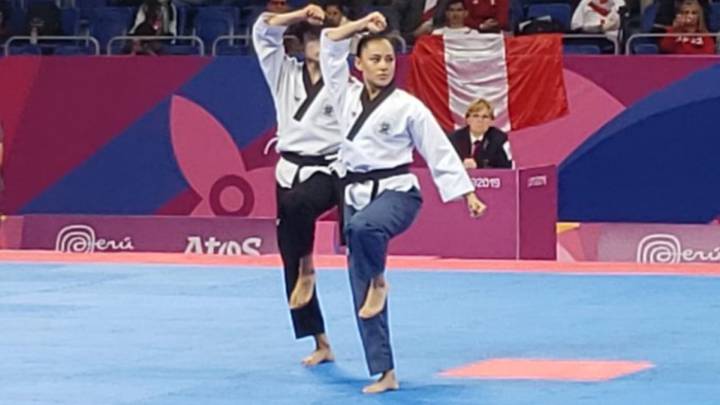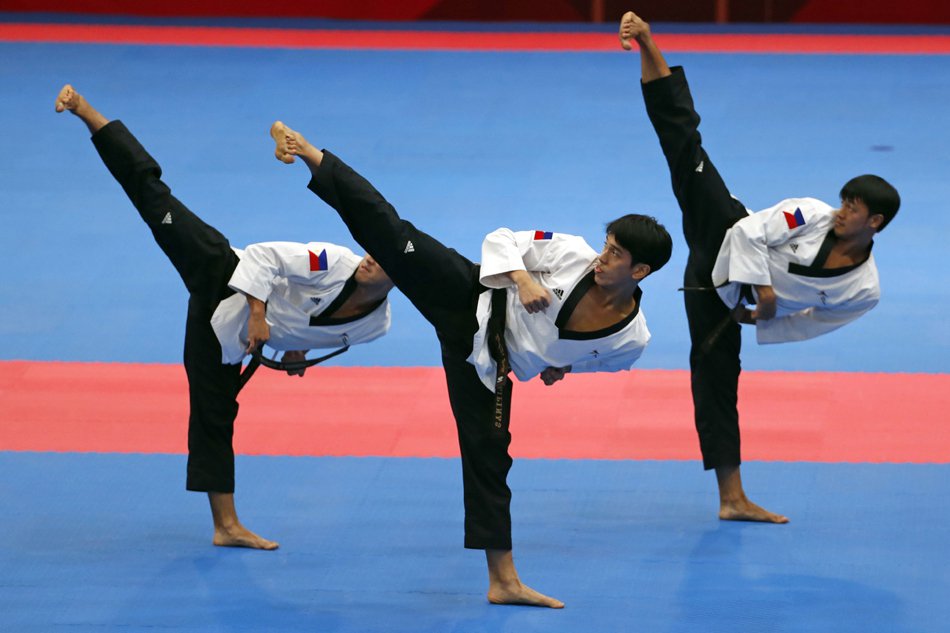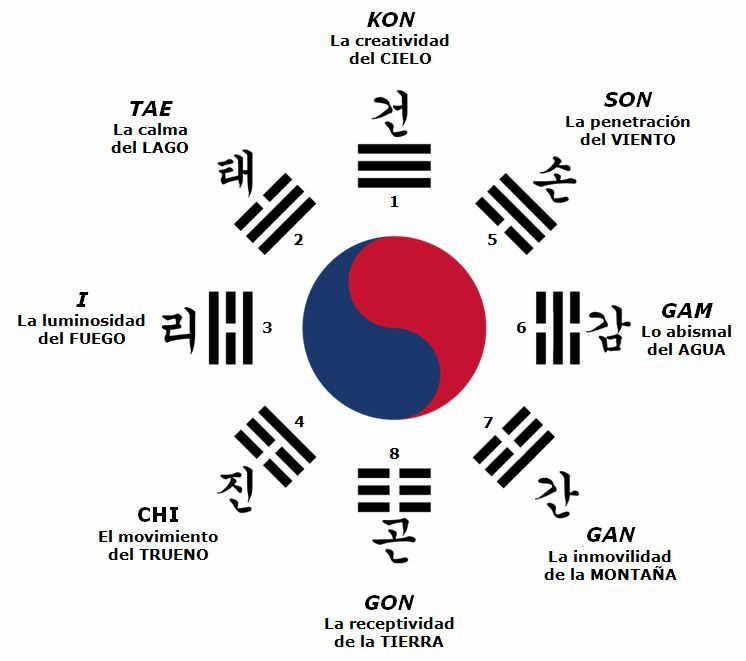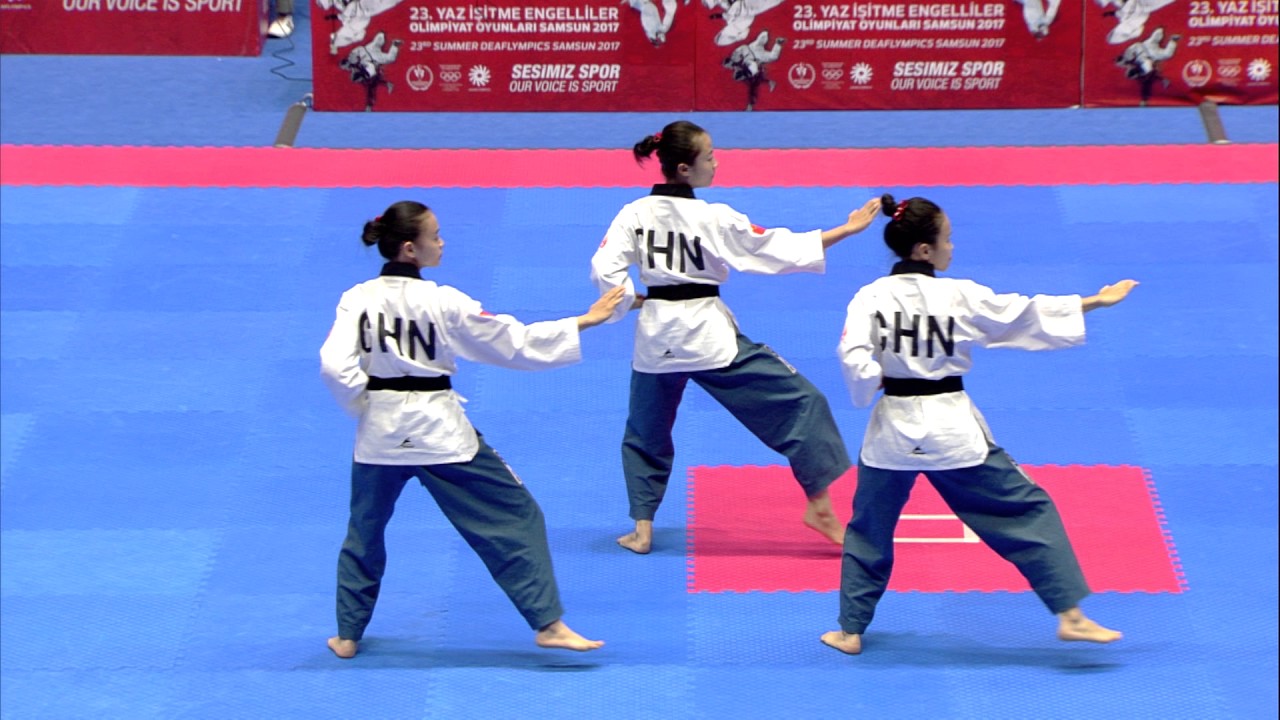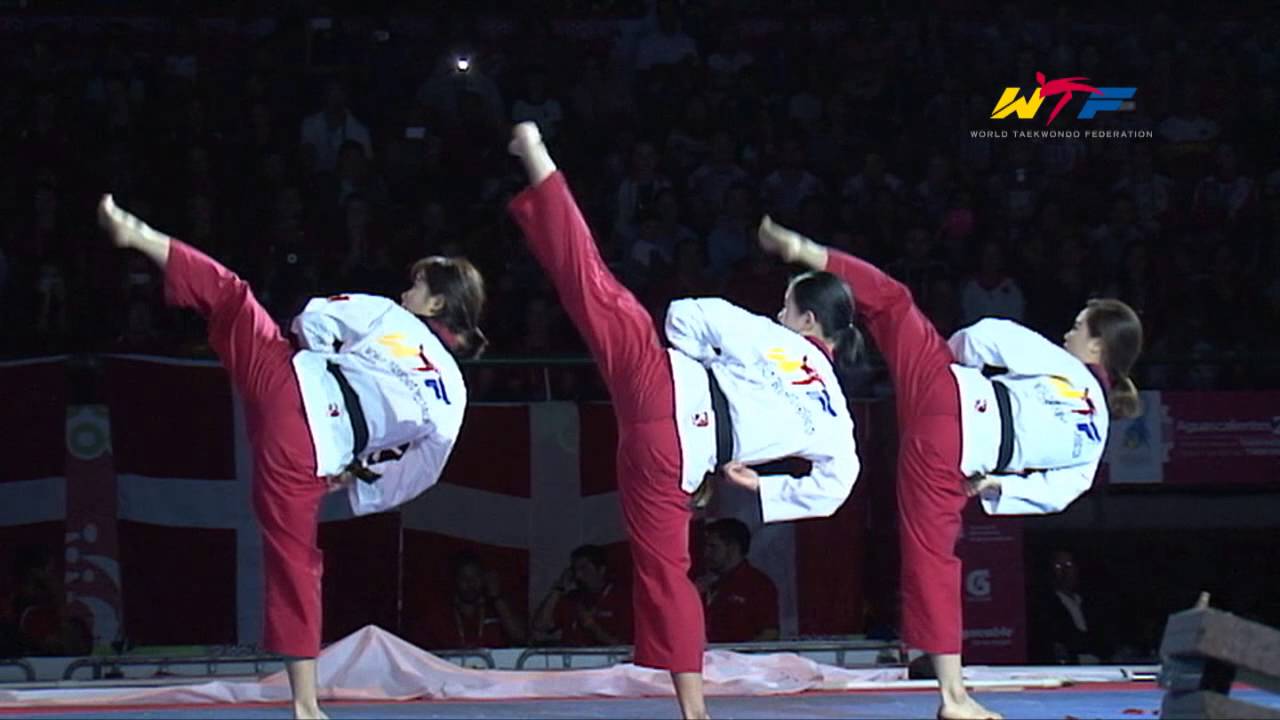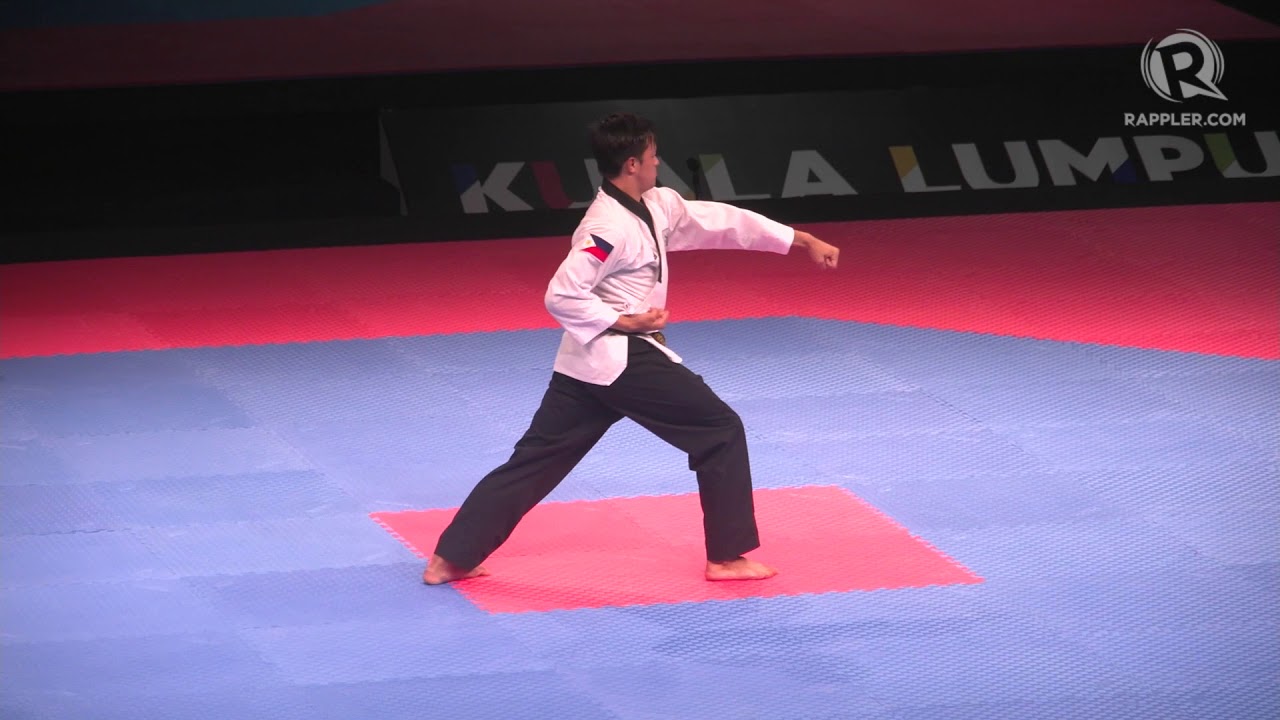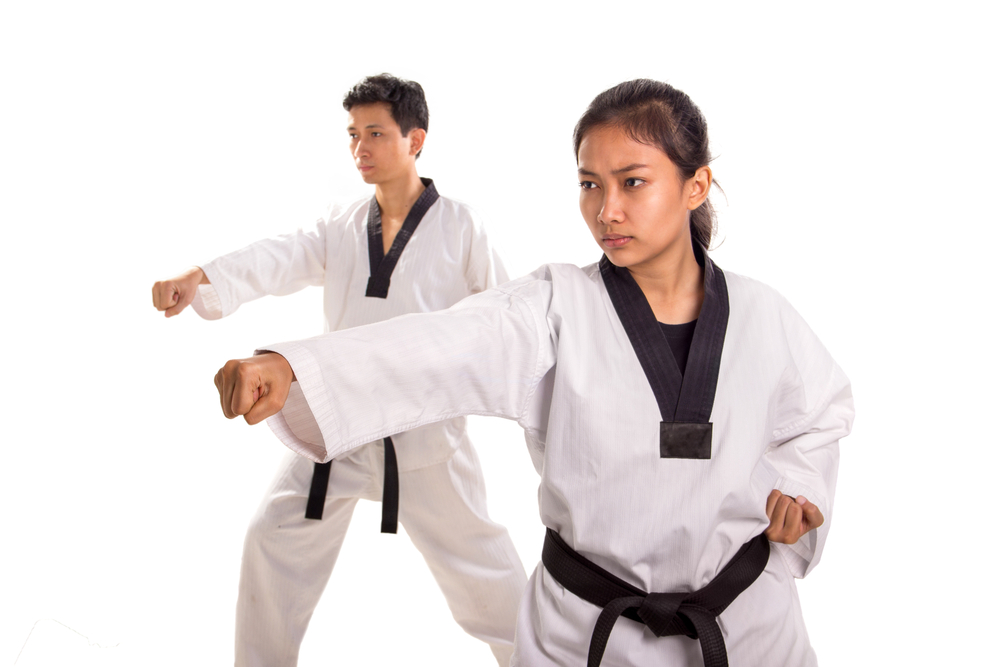8th POOMSAE TAEGUK PAL CHANG
The 8th Poomsae TAEGUK PAL CHANG contains many basic movements and is the last TAEGUK pumse. From this pommsae we will pass to the superiors.
6th POOMSAE TAEGUK YUK CHANG
The 6th pumse or Poomsae TAEGUK YUK CHANG pushes the student towards the middle of the lines. In this pumse or poomsae the scream or kiap is done in the…
5th POOMSAE TAEGUK OH CHANG
eferring to the Poomsae Taeguk Oh Chang is the representation of the principle "Seon" and means "wind". It is made up of three lines, called a trigram, made up of…
TAEGUK POOMSAES
The Taeguk Poomsaes are the initial or basic pumses of the WT (WTF) style. They are a set of eight nested pumses depending on their level of complexity. Associated to…
7th POOMSAE TAEGUK CHIL CHANG
The pumse or Poomsae Taeguk Chil Chang is the seventh of the eight Taeguk forms used by the Kukkiwon Taekwondo Federation and the WT.
4th POOMSAE TAEGUK SA CHANG
The 4th pumse or poomsae Taeguk Sa Jang, symbolizes thunder, in the first turn a movement of the front foot is made, the last two turns are made turning on…
3rd POOMSAE TAEGUK SAM CHANG
In the 3rd Pumse or Poomsae TAEGUK SAM CHANG for the first time the position tuit kubi and defense techniques with open hand.
2nd POOMSAE TAEGUK I CHANG
The 2nd Poomsae TAEGUK I CHANG symbolizes a lake from which it tries to show calmness and agitation and inner activity. Usually, this poomsae is done in order to pass…
1st POOMSAE TAEGUK IL CHANG
The POOMSAE TAEGUK IL CHANG the first of the poomsaes in taekwondo.
WHAT ARE TAEKWONDO POOMSAES?
oomsaes or Pumses of taekwondo are combinations of movements that represent attacks and defenses executed in a specific order or line of movements. They simulate attacks and defenses against one…
